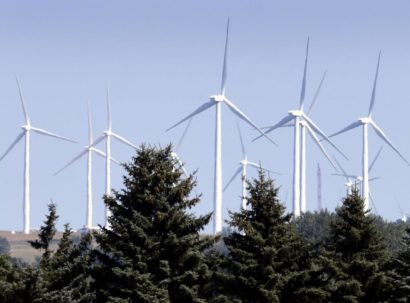REBA Member Highlight: Standing Rock Sioux Tribe
BLOG | 28 April 2021 | Joseph McNeil, Jr.
REBA Member Highlight: Standing Rock Sioux Tribe
From Energy Dependence to Self-reliance: How Standing Rock’s Indigenous-led SAGE Development Authority Plans to Restore Balance with the Anpetu Wi Wind Farm
In 2016, developments around the Dakota Access Pipeline (“DAPL”) thrust Stranding Rock and the Greater Sioux Nation into the national news. Against our express wishes and in contravention of our sovereignty as a Tribal Nation, an oil pipeline was being built through our ancestral land and along the Missouri River – endangering historical sacred sites and threatening drinking water for millions of people.
It was our youth at Standing Rock who began the #NoDAPL movement, united in the Lakota/Dakota saying Mni Wiconi (pronounced “min-ee which-O-nee”), Water of Life.
Thousands of Native and non-Native citizens joined us in solidarity as we camped, prayed, protected, and educated one another in ways to create a more just future for Unci Maka (Grandmother Earth) and all of Her inhabitants. Even as the Pipeline’s fate is still in litigation and it continues to operate illegally, we continue our work for more responsible energy sources in our communities.
Racial justice is Climate justice. Environmental justice. Economic justice. These are all elements of the same thing – a healthy, hospitable, and sustainable future that includes us all. While we work for justice in the courts, our community is taking action toward a renewable energy future for Standing Rock. That future begins with SAGE Development Authority and its inaugural project: a 235MW wind farm named Anpetu Wi.
Anpetu Wi, which means “the first rays of the new day” in our Lakota language, will fundamentally change Standing Rock’s energy posture from one of dependence to self-reliance. By developing sustainable energy resources on Indigenous land, we hope to inspire a movement of community-determined development in accordance with Natural Law in a model that can be replicated throughout the region and beyond. SAGE’s goal is for Anpetu Wi to be operable by 2024.
SAGE is a women-led, Standing Rock Sioux Tribe-formed and federally chartered Section 17 Tribal Corporation and a member of the American Public Power Association (following industry tenets of the APPA as a utility provider.) We successfully completed the Interconnection Application in April 2020 with Southwest Power Pool Regional Transmission Operator. Pre-feasibility tests predict strong economics based on our proposed turbine location.
Our goal is to export renewable energy to commercial, industrial, and/or utility buyers, reinvesting the revenue generated to create an economic engine at Standing Rock by supporting institution development at Standing Rock such as schools, job training, housing infrastructure, financial institutions, and roads – as well as other renewable energy and community-directed projects (such as microgrids.)
With a Tribal Council-appointed and women-led Board of Directors, we are proof-positive of our commitment to empowering Indigenous people as leaders in a community-determined and self-determined manner. SAGE has been established with generous support from foundations such as the Wallace Global Fund, Sierra Club Foundation, Seventh Generation Fund, JBP Foundation, Rockefeller Philanthropy Advisors, NDN Collective, Cedar Tree Foundation, The Christensen Fund, and Tamalpais Trust.
Get Involved
You can learn more about the work SAGE is leading and how to get involved through our website: www.anpetuwi.com.
You Might Also Like
On July 6, 2020, The New York Times reported on the ruling of a district court that the Dakota Access Pipeline must shut down pending an environmental review and be emptied of oil by August 5, marking a huge victory for the Standing Rock Sioux Tribe and other Native American and environmental groups who have […]
On August 25, The Bismarck Tribune published an article about SAGE Development Authority’s plan to develop the Anpetu Wi Wind Farm at Standing Rock and the crowdfunding efforts that will help bring this plan to fruition. “About 60 turbines are slated to dot the Porcupine Hills, a badlands-esque part of Sioux County between Fort Yates […]

